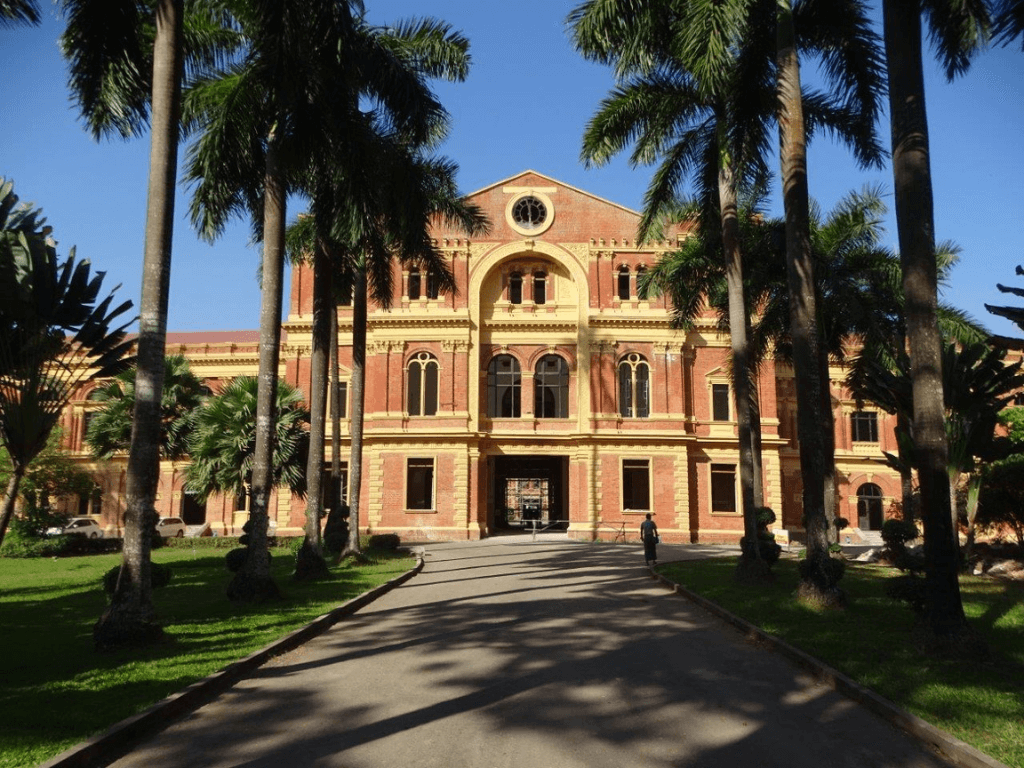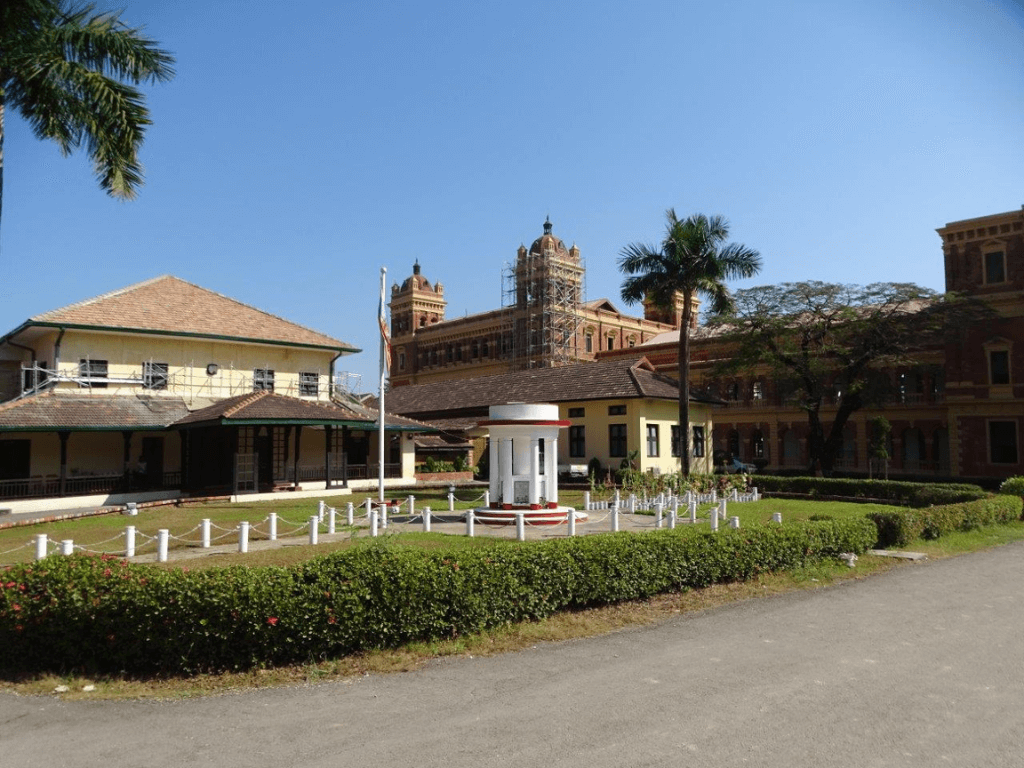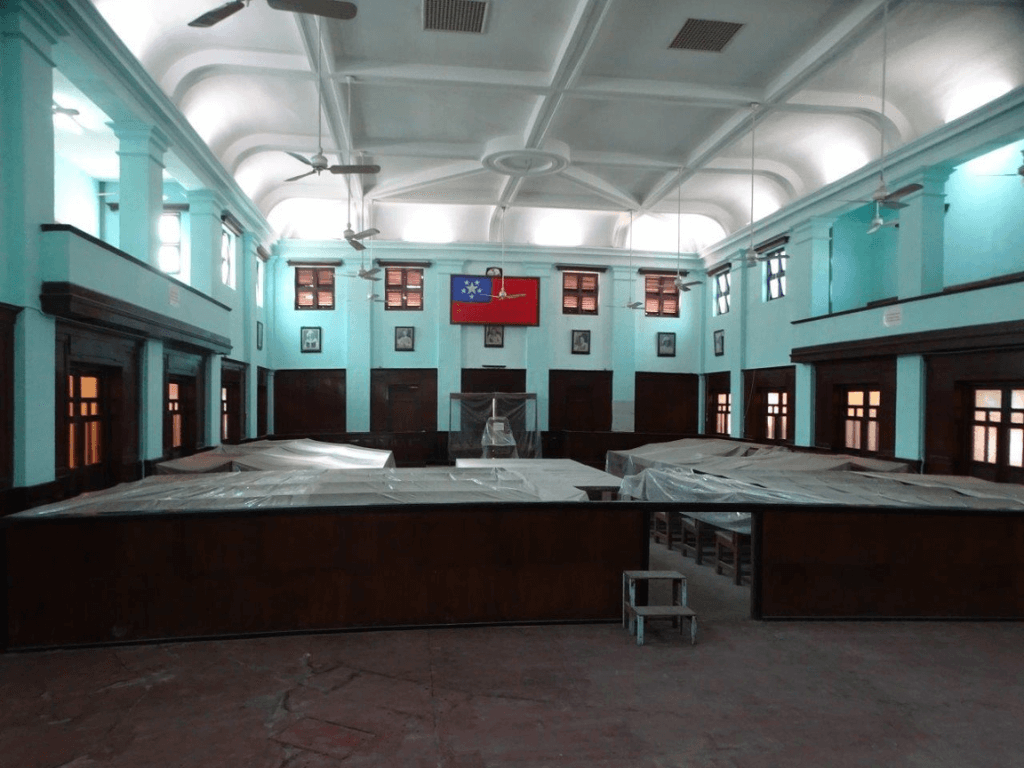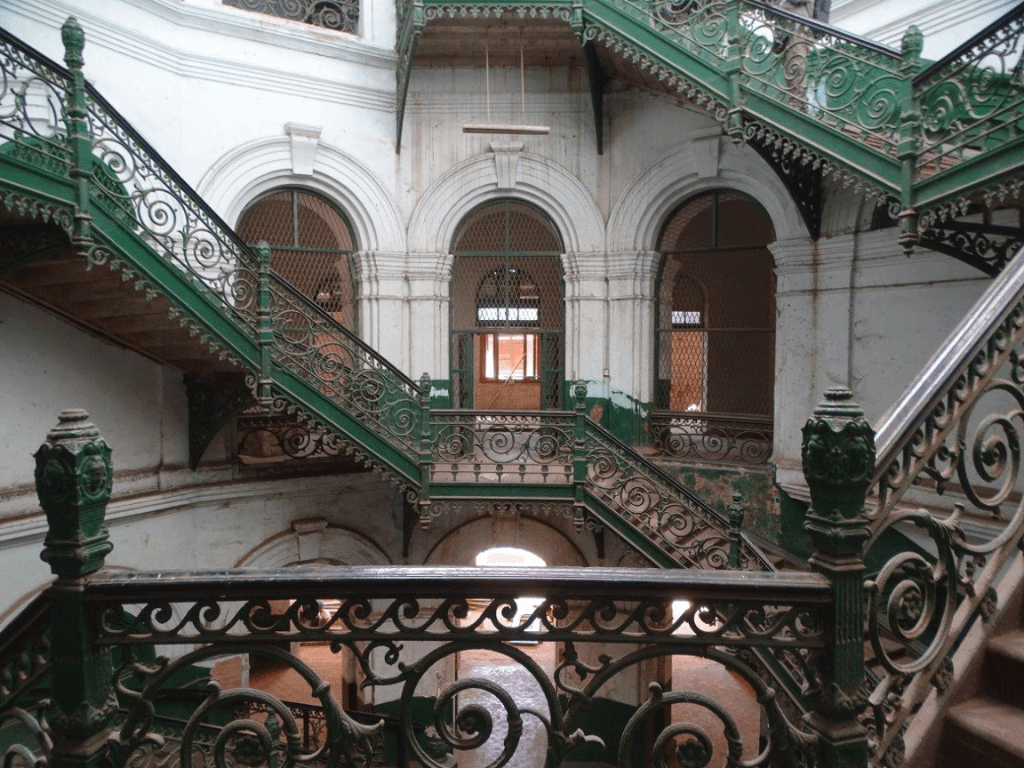
On the first Sunday of January 2018, I was once again strolling through Yangon's city centre and marvelling over the remnants of the colonial era when I spotted a sign reading "Yangon Book Street" at the corner of Mahabandoola Road and Theinbyu Road. Although I had never heard of it before, I quickly learned that Yangon Book Street is open every Saturday and Sunday from 9 a.m. to 5 p.m. between November and April. Curious, I turned right there and walked north on Theinbyu Road, passing one bookstall after another until I reached Anawratha Road.
Somewhere along the way there was a gap between two bookstalls, and I was looking at a large wrought-iron gate. Beyond the gate, slightly hidden among palm trees and verdant shrubs yet clearly visible, was the Minister's Office or Secretariat, an imposing red-and-yellow-brick Victorian building spanning several blocks. But it was neither the wrought-iron gate nor the mighty brick building that attracted my attention, but rather the clearly visible white sign on the gate announcing: "The Secretariat Renovation Tour".
This building had been off limits to me for over 20 years and now there were even guided tours. What an opportunity! Since there were no tours on Sunday, however, I only wrote down the number and registered by phone for the following Saturday.
I was standing in the same spot again six days later when the gate opened, right on time, to let in our small group of six people. From the entrance gate, we walked along a well-paved path flanked on both sides by slender, towering palm trees, through the park and straight towards the building's east wing. From there, a passageway took us to the square courtyard of the Secretariat complex. What a historic place!

After the completion of the Secretariat in 1905, the entire colony was effectively managed from there. And every critical step along the country's road to independence from British rule took place within this complex: the establishment of the Diarchy in 1923, the elections for the Burma Legislative Council on the Separation of India in 1932, and the development of the Government of Burma Act of 1935, which came into force following the separation of Burma from India in 1937, allowing Ba Maw to became the first Burmese Prime Minister.
The most significant single event in the Secretariat building occurred on the morning of 18 July 1947, just six months before Myanmar's independence from Great Britain. On that day, the country's charismatic leader and founder of the Burmese Army, General Aung San, and six of his ministerial colleagues were murdered during a meeting of the Executive Council held in the building's southwest corner. It was an event that was to have a great impact on the course of Burmese history.
And this was where – in January 1948 at 4:20 in the morning – the British flag was lowered for the last time and the Union of Burma flag was hoisted to the sounds of the Burmese national anthem Kaba Ma Kyei ("Until the End of the World").
The country's administration was later gradually relocated to other buildings and the Secretariat stood empty for a long time after the government moved to the new capital of Naypyidaw in 2005.
Across from us lay the building's west wing, which was completed along with the east wing in only three years (between 1903 and 1905). We kept to the right, walked towards the flagpole and then stopped in front of the memorial plaques commemorating the victims of the 1947 assassination. Then we continued on towards the south wing, the oldest part of the Minister's Office.

Construction of the south wing began in 1889 and encountered great difficulties. Construction work was hampered by wet ground in the western corner of the property that had once been the location of a water tank, and additionally by a particularly torrential monsoon season. The water had to be continuously pumped out of the construction site. In order to stabilize the soil, pyinkado (an extremely hard wood that grows here in Myanmar) logs with lengths of four to six metres had to be driven into the ground and covered with a lattice of iron rails. The building's south axis was completed in 1893; rumours persist to this day that the whole south wing will eventually sink into the underlying marsh.
Even from a distance, we could clearly see that the western corner was much lower and had sunk half a metre in the decades after its construction. Although ground surveys had shown that the ground had stabilized since then, it was a still disturbing sight.
We entered the south wing and walked down the long corridor to the boardroom, where Myanmar's very first parliament following independence had assembled. We then reached the main entrance of the south wing, where an imposing double wrought-iron staircase wound up into the sky, ending at a glass ceiling that brightly illuminated the entire stairwell.

We slowly climbed the stairway and reached the next floor, which included the Martyr's Room, where General Aung San and the other ministers were murdered. There we stopped, curiously peering through the closed glass doors and into the room; but there nothing to see except for a bullet hole on the opposite wall.
What will happen to the former ministerial building when the renovation is complete? Plans for a hotel have fortunately since been abandoned.
The entire site is certainly spacious enough to allow multiple uses. In 2013, architects and urban planners proposed to convert the southwestern section (where the heroes of independence heroes were killed) into a museum or memorial site, while using other areas within the complex as an arts centre, theatre, and/or community centre. Adding restaurants and shops would make the complex more attractive, and the park could once again become a meeting place for locals. Giving it back to the people; what a great idea.
The tour took a good three hours and is highly recommended. There is a small café to the right of the exit where you can enjoy a drink and take a last look at the building.
